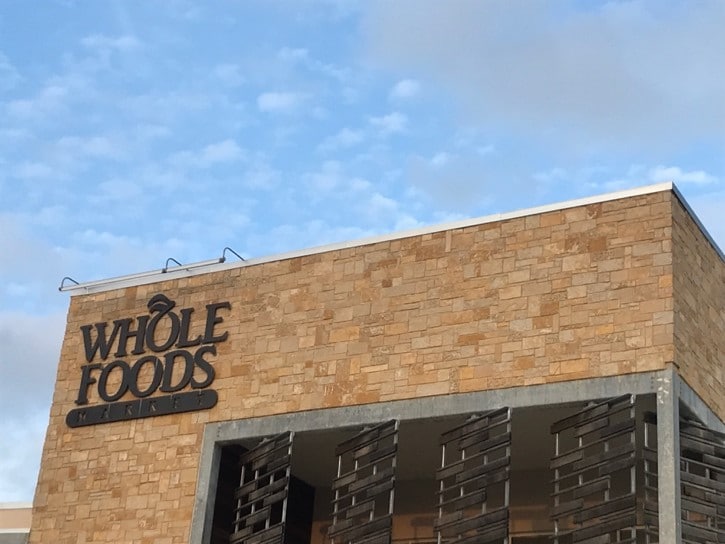Amazon Mission Statement and Vision Statement In A Nutshell

Amazon’s mission statement is to “serve consumers through online and physical stores and focus on selection, price, and convenience.” Amazon’s vision statement is “to be Earth’s most customer-centric company, where customers can find and discover anything they might want to buy online, and endeavors to offer its customers the lowest possible prices.”
Read Also: Amazon Business Model
Amazon’s Origin story
Back in 1993-4, Jeff Bezos worked for a firm on Wall Street called D.E. Shaw, and he looked into the Internet.
As the story goes, he was impressed by the staggering growth rate of the Internet and decided it made sense to build something on top of it.
While he had a well-paid job, and a more linear career ahead, on the other side, he recognized this was the opportunity of a lifetime.
Thus, to come to a final decision he used a regret minimization framework, and he resigned from his job, thus, starting Amazon.
Initially, it wasn’t easy to get Amazon off the ground, and neither to find potential investors.
Indeed, the first investors were Bezos’ parents. Yet, as Amazon kicked off its operations, it did that, by choosing a niche: books.
In fact, Bezos believed that Amazon could prove the viability of e-commerce, by selling an item, which is easy to package and ship, and that comes mostly in a few standard sizes.
Sales soon took off. And as Amazon expanded throughout the late 1990s, the company and Jeff Bezos placed wild bets on other internet players.
And in the meantime, Amazon had also started to expand to other categories, from DVD to music, and toys.
However, by 2001, the dot-com bubble burst, making Amazon lose 90% of its market cap, with many analysts predicting its demise.
It took years for Amazon to recoup its market cap from the dot-com bubble. Yet a key thing happened throughout these years, a paradigm shift.
Amazon understood that to scale its operations, it needed to stop thinking of an e-commerce player, and start implementing a platform strategy.
That is why the company started to build the internal infrastructure to enable third-party stores to build on top of Amazon.
This strategy would take more than ten years to fully roll out, and by the mid-2010s, Amazon’s third-party platform had become the dominant player, worldwide, hosting millions of small stores across the world.
In the meantime, as Amazon had tried to clean up the “jumbled mess” of its tech infrastructure, it built its own servers, in what would become, later on, Amazon AWS.
In addition, after several failed products (one of the greatest failures was the Kindle Fire), the company successfully stumbled upon Amazon Prime and Amazon Advertising.
All these pieces, came together, to build the Amazon we know today. If we were to break down Amazon’s history, we might break it down in these four waves:
Amazon pre-dot-com bubble (1994-2000)
Here we have an aggressive company with an ambitious vision, starting from books and expanding very quickly.
While the vision was ambitious, the way to achieve it was blurred.
And Amazon placed many bets on the Internet, also in areas it could not directly control.
Amazon post-dot-com bubble (2001-2009)
The Amazon of the post-dot-com bubble is a redefined company, with a clear vision and much more focused, on building its own infrastructure to transition from e-commerce to a platform business model.
The new Amazon (2009-2015)
The new Amazon is a company that focuses on expanding internationally by capitalizing on the infrastructure and growth playbook built in the previous decade.
The Amazon of these years expands in various countries, by testing, in each, a different growth model.
The tech giant (2015-forward)
Here we see Amazon, which had consolidated its business model and growth playbook, and it had become a dominant player and a monopolist in its space. This is the Amazon we know today.
Breaking down the Amazon mission statement
As pointed out by Amazon:
When Amazon.com launched in 1995, it was with the mission “to be Earth’s most customer-centric company, where customers can find and discover anything they might want to buy online, and endeavors to offer its customers the lowest possible prices.
In its annual report for 2019, Amazon highlights its mission to “serve consumers through online and physical stores and focus on selection, price, and convenience.”
- Selection.
- Price.
- Convenience.
I’ve highlighted in Amazon Flywheel or Virtuous Cycle how this focus has been in place since the start, and it has been one of the critical elements of Amazon speed!


In the same report, Amazon also highlights:
We design our stores to enable hundreds of millions of unique products to be sold by us and by third parties across dozens of product categories. Customers access our offerings through our websites, mobile apps, Alexa, and physically visiting our stores. We also manufacture and sell electronic devices, including Kindle e-readers, Fire tablets, Fire TVs, and Echo devices, and we develop and produce media content. We strive to offer our customers the lowest prices possible through low everyday product pricing and shipping offers, and to improve our operating efficiencies so that we can continue to lower prices for our customers. We also provide easy-to-use functionality, fast and reliable fulfillment, and timely customer service. In addition, we offer Amazon Prime, a membership program that includes unlimited free shipping on over 100 million items, access to unlimited streaming of thousands of movies and TV episodes, and other benefits.
Read Also: Amazon Business Model
Breaking down the Amazon vision statement
Amazon’s vision statement is an extension of its mission:
To be Earth’s most customer-centric company, where customers can find and discover anything they might want to buy online, and endeavors to offer its customers the lowest possible prices.
However, its vision gets traction from a core belief summarized as always being in “day one.”
Jeff Bezos explained day one in these terms:
Day 2 is stasis. Followed by irrelevance. Followed by excruciating, painful decline. Followed by death. And that is why it is always Day 1.
Now, it might be easy to say that Jeff Bezos made it, so he can say whatever he likes.
However, he has been obsessed with this concept since the beginning.
In the 1997 Shareholders Letter, Jeff Bezos explained:
But this is Day 1 for the Internet and, if we execute well, for Amazon.com. Today, online commerce saves customers money and precious time. Tomorrow, through personalization, online commerce will accelerate the very process of discovery. Amazon.com uses the Internet to create real value for its customers and, by doing so, hopes to create an enduring franchise, even in established and large markets.
At the time, Amazon focused on the following:
- Long-term.
- Obsess over customers.
- Infrastructure.
- Employees.
It all starts from there. In 2016 Jeff Bezos highlighted a few core values that made up Amazon‘s culture:
It is worth exploring how Amazon deals with being a customer-obsessed company.
Indeed, most businessmen know that exceeding each time customers’ expectations isn’t’ a simple game.
And as expectations are met and exceeded customers become more and more accustomed to the quality of the service, until they grow unsatisfied.
Thus, how does Amazon keep up with that?
Read Also: Amazon Business Model
Breaking down customer-centrism according to Amazon


Customer obsession was also highlighted in the 2017 Shareholders Letter as a critical parameter:
The American Customer Satisfaction Index recently announced the results of its annual survey, and for the 8th year in a row customers ranked Amazon #1
Amazon is aware of the fact that customer obsession isn’t an easy game. And in the 2017 Shareholders Letter, Jeff Bezos highlighted:
One thing I love about customers is that they are divinely discontent. Their expectations are never static – they go up. It’s human nature. We didn’t ascend from our hunter-gatherer days by being satisfied. People have a voracious appetite for a better way, and yesterday’s ‘wow’ quickly becomes today’s ‘ordinary’.
This puts Amazon in a cycle where not being able to exceed customers’ expectations can make its flywheel slow down.
Jeff Bezos specified:
I see that cycle of improvement happening at a faster rate than ever before. It may be because customers have such easy access to more information than ever before – in only a few seconds and with a couple taps on their phones, customers can read reviews, compare prices from multiple retailers, see whether something’s in stock, find out how fast it will ship or be available for pick-up, and more.
Thus, how do you stay ahead of this game? Jeff Bezos offers us the answer:
There’s no single way to do it – it’s a combination of many things. But high standards (widely deployed and at all levels of detail) are certainly a big part of it. We’ve had some successes over the years in our quest to meet the high expectations of customers. We’ve also had billions of dollars’ worth of failures along the way.
For Jeff Bezos, high standards have four core characteristics:
The four elements of high standards as we see it: they are teachable, they are domain specific, you must recognize them, and you must explicitly coach realistic scope. For us, these work at all levels of detail. Everything from writing memos to whole new, clean-sheet business initiatives. We hope they help you too.
And most of all, they have to be unreasonably high!
Breaking down Amazon’s leadership principles

Amazon’s fundamental principles that drove and drive the company are:
- Customer Obsession
- Ownership
- Invent and Simplify
- Are Right, A Lot
- Learn and Be Curious
- Hire and Develop the Best
- Insist on the Highest Standards
- Think Big
- Bias for Action
- Frugality
- Earn Trust
- Dive Deep
- Have Backbone; Disagree and Commit
- Deliver Results
Breaking down Amazon’s business model
| Amazon Revenue Breakdown | 2022 |
| Online stores | $220B |
| Physical stores | $18.96B |
| Third-party seller services | $117.71B |
| Subscription services | $35.22B |
| AWS | $80B |
| Advertising | $37.74B |
| Other | $4.25B |
Let’s see all the components of the Amazon Business Model and how those fit together, in part, to create a whole.
Amazon Platform: Both Consumer-Facing (With Amazon E-commerce) And Enterprise/SMB (With AWS)

A Peek Into The Amazon’s Empire




Understanding Amazon From A Systemic Standpoint


Amazon’s Way Of Thinking: Working Backward


Read more:
Read next:
Other resources:
Related
link







